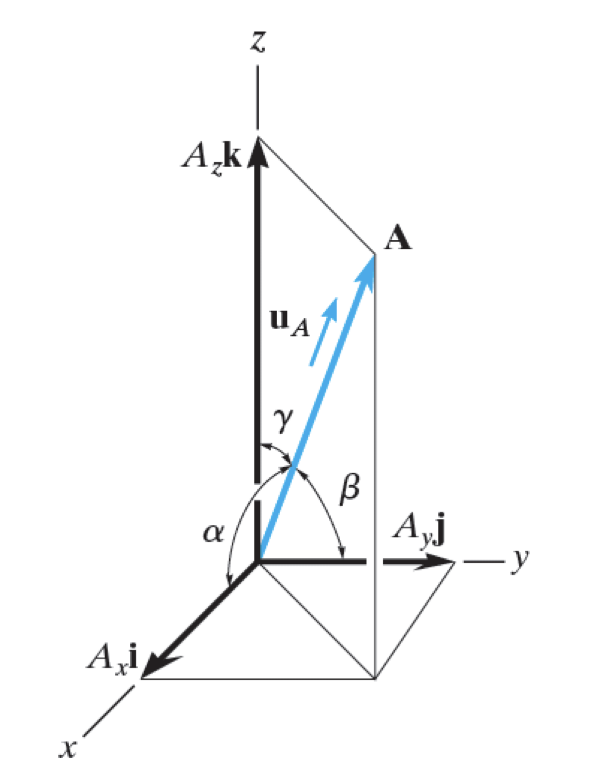Cartesian vectors recap
A vector $$\mathbf{A}$$ can be represented in cartesian form as:
Coordinate direction angles
The direction of $$\mathbf{A}$$ can be defined by the coordinate direction angles $$\alpha$$, $$\beta$$ and $$\gamma$$,
measured between the tail of $$\mathbf{A}$$ and the positive $$x$$, $$y$$, $$z$$ axes. Figure 2-26 in the textbook ilustrates this idea:

Let us now try and build an intuition about these coordinate direction angles, and how it relates to the components of a vector. The interactive diagram below plots a vector $$\mathbf{F}$$, and the planes in which the coordinate direction angles live. In the legend you will see the cartesian representation of $$\mathbf{F}$$, along with values for $$\alpha$$, $$\beta$$ and $$\gamma$$, rounded to the nearest integer. Try adjusting the components of $$\mathbf{F}$$ by moving the sliders and observe how the coordinate direction angles change in response. You can also pan the diagram to visualise the planes from different perspectives. Here are some things to think about:
1. When is $$ 0 < \alpha < 90$$ and when is $$ 90 < \alpha < 180$$?
2. What about $$\alpha=0, 90, 180$$? Do the same for $$\beta$$ and $$\gamma$$.
3. Try to find a case where $$\alpha$$ remains fixed while changing the $$y$$ and $$z$$ components of $$\mathbf{F}$$. Why does this happen?
4. For some practice, try to calculate the coordinate direction angles yourself, rounded to the nearest integer.
adjust value $$x$$
adjust value $$y$$
adjust value $$z$$